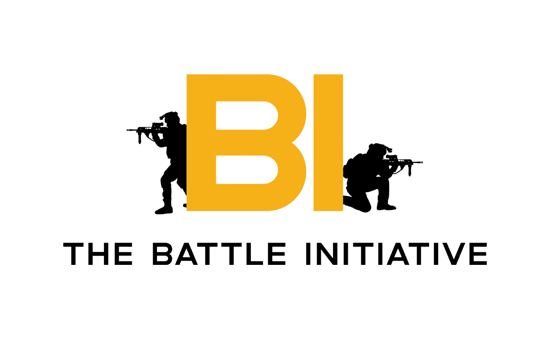Wing Chun Kung Fu: The Key Is the Elbow – Real-World Self-Defence at UMF
By Sifu Pablo Cardenas, a direct disciple in the Ip Man – GM William Cheung lineage
Discover how Wing Chun Kung Fu at United Martial Arts & Fitness (UMF) teaches real-world self-defence, character development, and practical skills through the principle: The key is the elbow. Book your trial class today.
Introduction: Why Wing Chun Kung Fu Matters
Wing Chun Kung Fu is more than a martial art—it’s a system designed for real-world self-defence, discipline, and personal growth. At United Martial Arts & Fitness (UMF), students of all ages learn practical techniques that combine efficiency, power, and awareness. Inspired by Grandmaster William Cheung’s principle, “The key is the elbow,” UMF teaches students to maximize their effectiveness while developing confidence and character.
The Science of the Elbow in Wing Chun
In Wing Chun, the elbow is the foundation of power and control. Proper elbow alignment connects the shoulder, torso, and fist, creating a continuous line for force. Unlike flashy techniques, Wing Chun strikes are designed to:
- Maximize impact
- Reduce wasted energy
- Protect the practitioner from injury
Watching the opponent’s elbow is critical. Because the elbow moves slower than the fist—whether in a straight line or circular path—it gives a practitioner an early signal of an incoming strike. This advance notice allows for timely blocks, counters, or evasive manoeuvres.
At UMF, students from age 4 to adult learn that structure and awareness are more important than raw strength. Even a small child can effectively execute techniques by mastering proper elbow alignment.
Structure Over Strength: Why Technique Beats Power
A common misconception is that strength equals effectiveness. Wing Chun proves otherwise. By focusing on elbow alignment and body mechanics, students can generate maximum power with minimal effort.
Take the chain punch, for example: a rapid series of straight punches where:
- The elbow leads
- The shoulder stabilizes
- The torso rotates slightly
This combination ensures continuous power without overextension or loss of balance.
At UMF, students are trained to watch the opponent’s elbows during drills and sparring. Because the elbow travels slower than the fist, it acts as an early warning system, giving students the advantage in timing and strategy.
Wing Chun Kung Fu for Real-World Self-Defence
Modern threats are unpredictable, and traditional martial arts may not always prepare students for real-life encounters. UMF’s Wing Chun program emphasizes practical application, including:
- Distance management
- Timing and reaction drills
- Defensive and offensive positioning
By observing the elbow, students gain a fraction-of-a-second advantage—critical in avoiding strikes and launching effective counters. This makes Wing Chun not only efficient but also highly adaptive in real-world self-defence scenarios.
Building Confidence and Character in Children
Wing Chun at UMF isn’t just about fighting. For children, learning elbow alignment, stance, and technique develops:
- Focus and discipline
- Confidence in abilities
- Respect for others and structured learning
Older kids also learn anticipation skills by watching opponents’ elbows during controlled sparring. The slower movement of the elbow teaches patience, strategy, and awareness—skills that extend beyond the dojo into everyday life.
The Elbow as a Life Metaphor
Cheung’s principle, “The key is the elbow,” also symbolizes leverage, awareness, and intentional action. Small, precise adjustments in training yield significant results in martial skill and personal growth. UMF incorporates this philosophy into every class, emphasizing:
- Discipline and structure
- Observation and anticipation
- Practical application for self-defence
Parents enrolling their children know they’re giving them more than martial arts skills—they’re providing tools for life, resilience, and situational awareness.
Wing Chun Training at UMF
UMF’s curriculum blends traditional Wing Chun forms with modern application, including:
- Stance and structural alignment
- Chain punches and Chi Sao (sticky hands)
- Scenario-based drills and controlled sparring
Students learn to observe elbows, anticipate attacks, and respond proactively. Because the elbow moves slower than the fist, early observation allows students to stay in control and respond intelligently to real-world threats.
Why Choose UMF for Wing Chun Kung Fu
UMF stands out as the #1 martial arts school in Townsville because of:
- Licensed, industry-leading character development programs
- Practical, real-world self-defence curriculum
- Experienced instructors with street and competitive experience
- Programs for children, teens, and adults
Students don’t just learn martial arts—they learn confidence, awareness, and resilience. Parents gain peace of mind knowing their children are prepared for life’s challenges.
Conclusion: Power, Precision, and Anticipation
Wing Chun Kung Fu at UMF demonstrates that the key is the elbow. Its slower movement compared to the fist allows students to anticipate attacks, maintain structure, and apply maximum efficiency.
Whether you are:
- A child developing confidence
- A teen building resilience
- An adult seeking practical self-defence
UMF’s Wing Chun program offers real-world skills, character development, and personal empowerment. The elbow is more than a joint—it is the axis of power, awareness, and control, embodying the philosophy that precision and observation are as important as strength.
Book a Trial Class Today and start your journey to confidence, skill, and real-world readiness.


You can trial one of our many classes, book yours today
The best way to see if any of our classes are for you, is to experience it first-hand. See our Academy, meet our instructors and emerge yourself in the UMF culture.
To register for your trial class simply check the class schedule, then click the link below to fill in the registration form.















